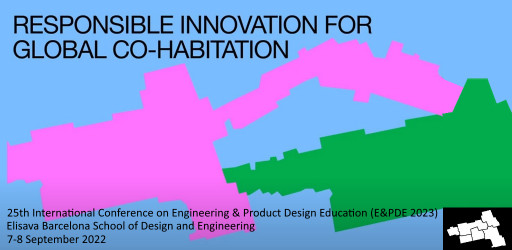Type:
Year:
2023
Editor:
Buck, Lyndon; Grierson, Hilary; Bohemia, Erik
Author:
Series:
E&PDE
Institution:
University of Canberra, Australia
Section:
Professional perspectives for design students in a pluralistic future
DOI number:
ISBN:
978-1-912254-19-4
Abstract:
ABSTRACT We observed novice designers, especially the young, have difficulties empathizing with target groups who are significantly different from them in terms of age, capabilities, culture and cognitively. In addition, they often confuse empathy with sympathy, and their design solutions show an element of condescension. As Nadan and Stark (2017, p. 685) noted. “Learning about ‘Others’ brings with it the risk of over-generalization, as well as the risk of overlooking the intersectionality of different categories of difference… and other personal circumstances and attributes. This, in turn, can lead to stereotypical attitudes towards people and the tendency to ignore their unique needs and life stories…. Such an approach may promote the view of groups as natural, homogenous, static and detached from macro structures”. In other words, this is an antithesis to the inclusive design paradigm - Which is all about recognizing the diversity and designing to accommodate it. To address the above problem, we have employed two strategies: 1. Transformational teaching, that creates a dynamic relationship between teachers, students and a shared body of knowledge to encourage learning and personal growth (Slavich & Zimbardo, 2012). This is achieved through situated learning with teachers acting as intellectual coaches who provide guidance as and when required. 2. Pedagogy of discomfort, According to Boler (2004, p. 176) pedagogy of discomfort as a teaching practice aims at disorienting learners through unsettling their taken-for-granted assumptions: and consequently, engaging them in ‘collective witnessing’, ‘mutual exploration’ and ‘deliberate listening’. This is achieved by designing the learning context to engage students in an activity that is both surprising and required them to un-anchor from their comfort zone. This paper shares our experience using the strategies mentioned above to teach empathic design to novice designers. We discuss our findings around two case studies: one is an interdisciplinary course comprising students from visual design, industrial design and nursing working together in a culturally diverse environment to solve a real-world problem based on ageing and dignity. Two, a dedicated course (Disability and Design) brings students with diverse abilities together to identify and respond to a range of design opportunities. Within this context, we view the disconnect between the user expectations and the user experience as a design opportunity, where a design intervention can resolve/solve a negative user experience.
Keywords:





